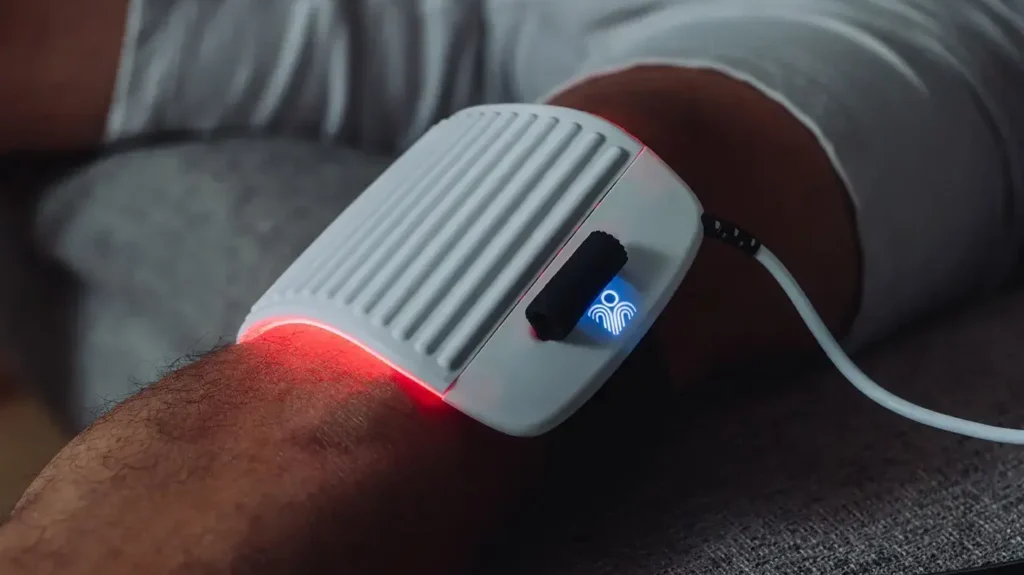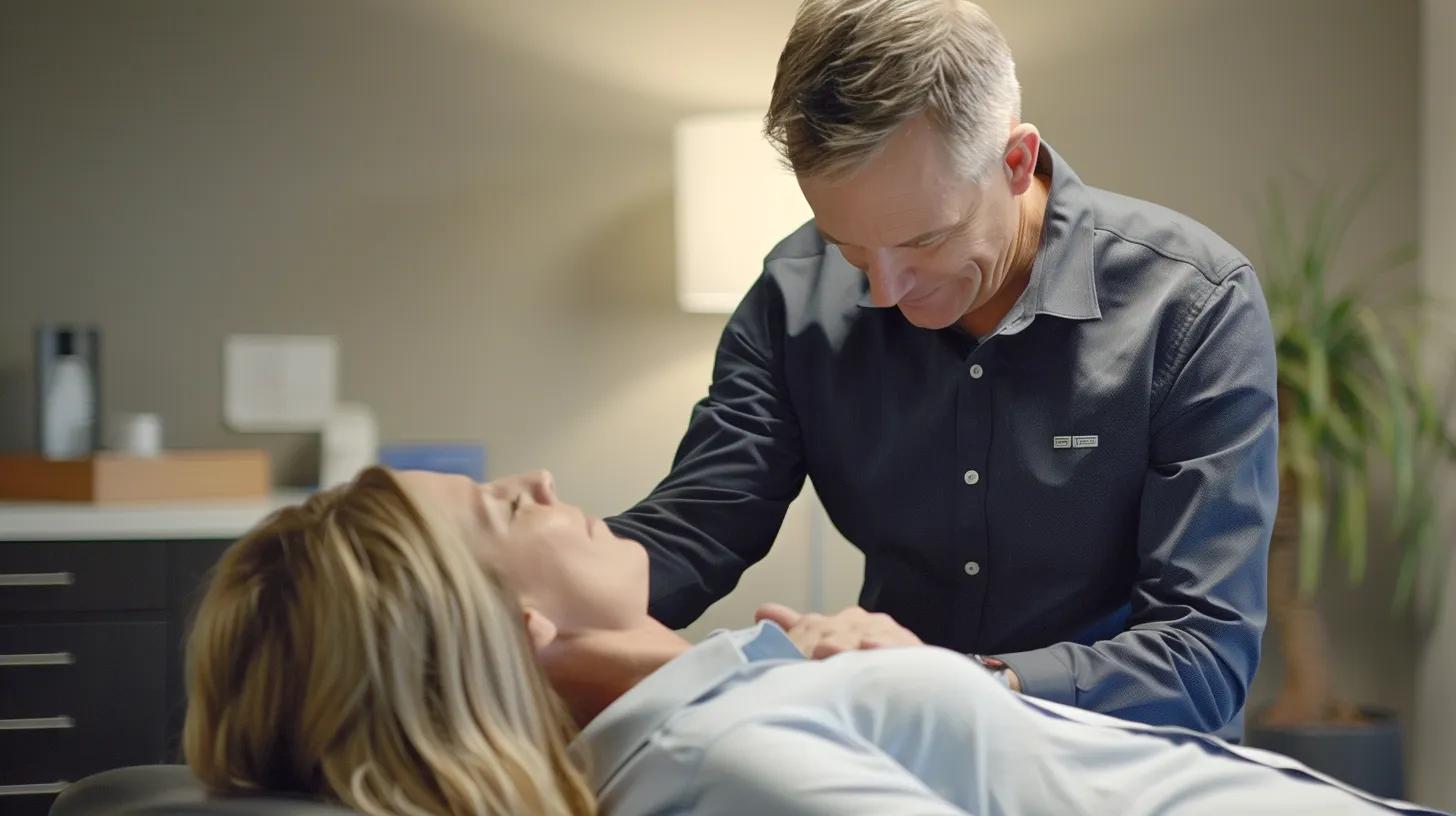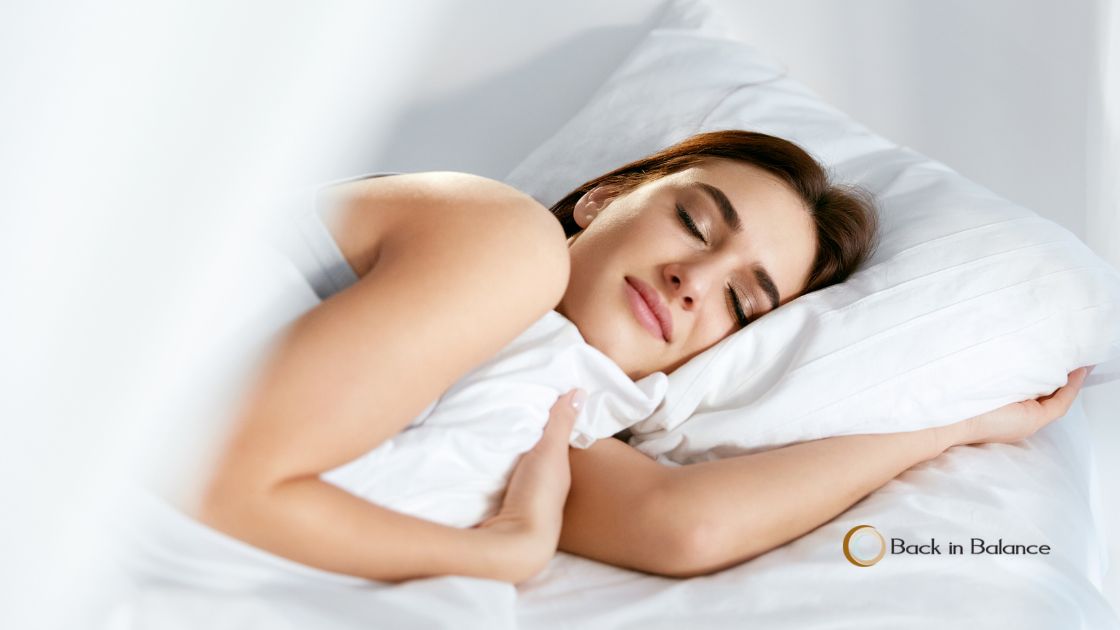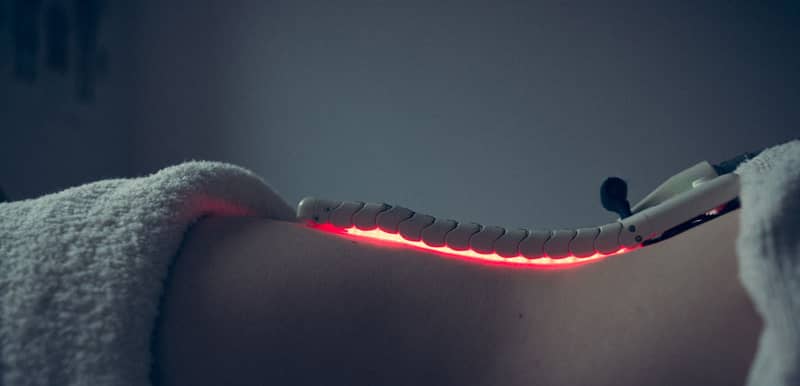
By: Dr. Michael Friedman
Arthritis affects millions globally, and among its many forms, osteoarthritis (OA) is the most common. Characterized by pain, stiffness, and decreased mobility, OA can be life-limiting. As research into effective therapies continues, cold laser therapy has emerged as a promising, non-invasive option.
What Is Osteoarthritis?
Osteoarthritis (OA) is a degenerative joint disease characterized by the breakdown of cartilage that protects the ends of bones. Cartilage is a smooth tissue that allows joints to move easily without friction. Over time, as the cartilage wears away, bones can begin to rub against each other, causing pain, swelling, stiffness, and reduced movement. OA can affect any joint but is most commonly found in the knees, hips, hands, and spine.
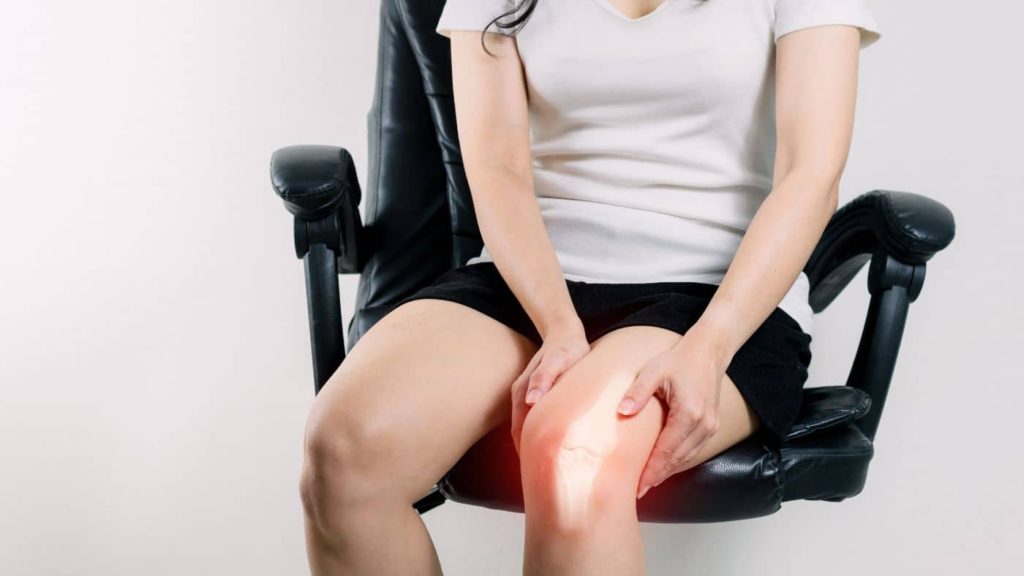
While osteoarthritis is often associated with aging, it can also be caused by factors like joint injuries, obesity, genetics, and overuse of certain joints. It is a leading cause of disability, particularly in older adults, and can significantly impact a person’s quality of life.
Cold Laser Therapy: An Overview
Cold laser, also known as low-level laser therapy (LLLT), is a non-invasive treatment that uses low-intensity red and infrared light to promote healing and reduce pain and inflammation. Unlike high-intensity lasers that are used in surgical procedures, cold lasers work without generating heat. This low-level light is typically delivered through a handheld device or laser probe, which is applied to the skin over the affected area.
This effective therapy works by stimulating the body’s cells to promote various biological processes, including increased blood circulation, enhanced tissue repair, and reduced inflammation. Cold laser therapy is commonly used in the treatment of musculoskeletal injuries, joint pain, and inflammatory conditions like arthritis.
How Cold Laser Therapy Helps Reduce Inflammation in Arthritis
One of the key benefits of cold laser therapy in treating arthritis is its ability to reduce inflammation. Inflammation plays a central role in the pain and joint damage associated with osteoarthritis. Inflammation occurs as a result of the immune system’s response to tissue damage or injury. In OA, inflammation can worsen cartilage degeneration and exacerbate pain.
Cold laser therapy has been shown to have several mechanisms that can help reduce inflammation:
- Cellular Stimulation: Cold laser therapy stimulates the mitochondria within cells, which are responsible for energy production. This increase in cellular energy helps tissues heal more quickly and reduces inflammation.
- Increased Blood Flow: The light energy from the laser increases blood circulation in the treated area, promoting the delivery of oxygen and nutrients to damaged tissues and facilitating the removal of waste products that contribute to inflammation.
- Reduction of Pro-inflammatory Cytokines: Studies have shown that cold laser therapy can help modulate the production of pro-inflammatory cytokines (molecules that signal inflammation). By reducing the number of these molecules, the therapy helps to mitigate the inflammatory response in the joint.
- Pain Reduction: Cold laser therapy stimulates the release of endorphins and other natural painkillers in the body. This not only helps to reduce pain but also alleviates the discomfort that accompanies inflammation.
- Collagen Synthesis: Cold lasers have been shown to stimulate the production of collagen, an essential protein for tissue repair. This can help in the repair of cartilage and the restoration of joint function.
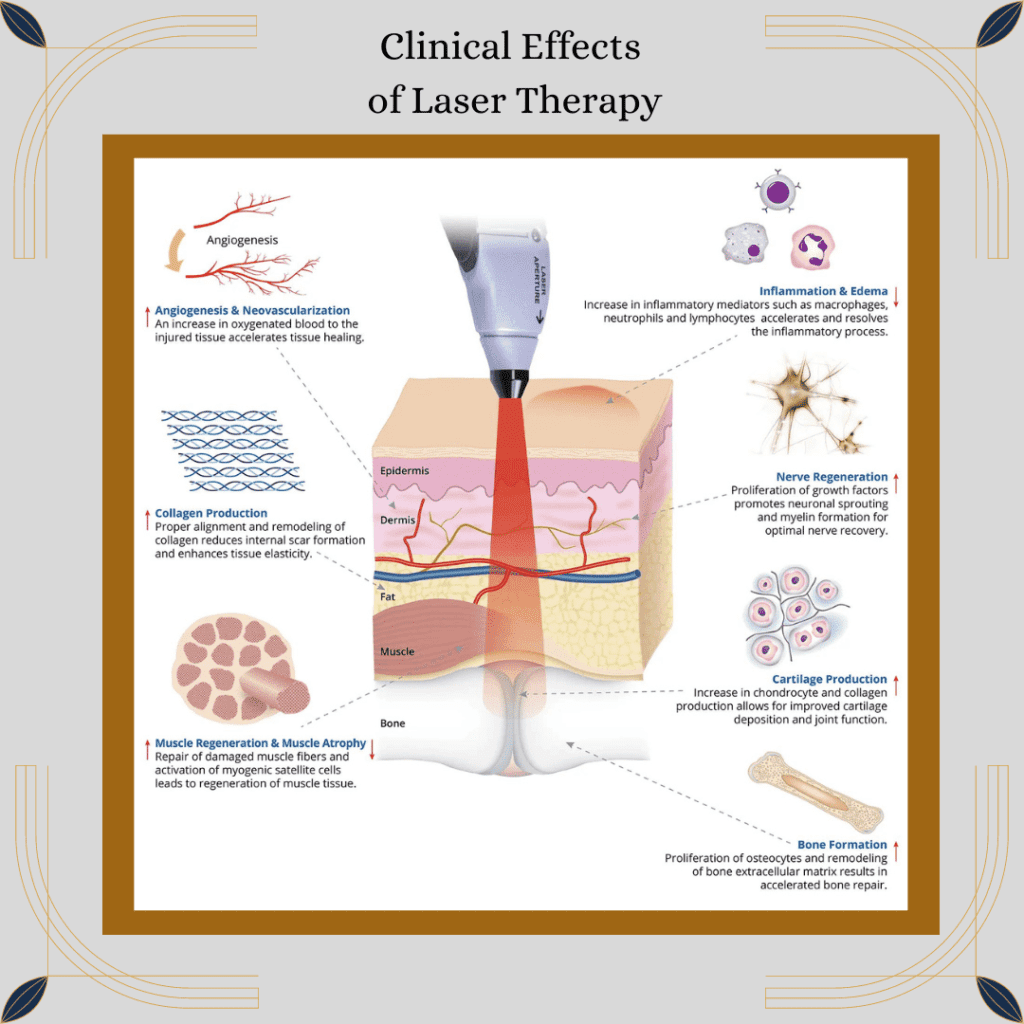
What the Research Says
Numerous studies have explored the efficacy of cold laser therapy in reducing the symptoms of osteoarthritis and other inflammatory conditions. While results can vary, the majority of research indicates that cold laser therapy is a promising option for managing arthritis symptoms, particularly pain and inflammation.
Research Findings
- Study: “The Effect of Low-Level Laser Therapy on Knee Osteoarthritis” (2007)
This study, published in Arthritis Research & Therapy, investigated the effects of low-level laser therapy on individuals with knee OA. The results showed that participants who received cold laser therapy experienced significant reductions in pain and improvements in knee function compared to those who received a placebo treatment. - Study: “Low-Level Laser Therapy in the Treatment of Osteoarthritis of the Knee” (2015)
Published in Clinical Rheumatology, this study found that cold laser therapy significantly reduced pain and stiffness in patients with knee osteoarthritis. The researchers concluded that cold laser therapy is an effective adjunctive treatment for knee OA, with minimal side effects and no adverse reactions. - Study: “Efficacy of Low-Level Laser Therapy for Shoulder Osteoarthritis” (2014)
In this study, published in Pain Medicine, researchers explored the use of low-level laser therapy in patients with shoulder OA. The study found that cold laser therapy significantly reduced pain and improved shoulder mobility, with long-term benefits continuing even after the treatment ended. - Study: “Low-Level Laser Therapy and Inflammation” (2013)
This research, published in Lasers in Medical Science, analyzed the effects of cold laser therapy on inflammatory cytokines in patients with knee OA. The study demonstrated that cold laser therapy could lower levels of pro-inflammatory cytokines, thus reducing inflammation and pain in affected joints. - Systematic Review: “Low-Level Laser Therapy for Osteoarthritis” (2020)
A systematic review published in Osteoarthritis and Cartilage analyzed multiple clinical trials of cold laser therapy for osteoarthritis. The review concluded that while there is variability in response, cold laser therapy was generally effective in reducing pain and improving function in patients with OA. The authors recommended further studies to determine optimal treatment protocols.
Why It Works: Underlying Biological Mechanisms
The effectiveness of cold laser therapy in treating arthritis is attributed to several biological mechanisms, including:
- Photobiomodulation (PBM): This is the primary mechanism through which cold lasers work. PBM refers to the process by which light energy is absorbed by the mitochondria of cells, leading to increased ATP (adenosine triphosphate) production. ATP is the energy currency of cells, and its increased production helps speed up tissue repair and reduce inflammation.
- Anti-Inflammatory Effects: As mentioned earlier, cold laser therapy can reduce inflammation by modulating the production of inflammatory molecules, such as cytokines and prostaglandins. This reduction in inflammatory markers helps to decrease pain and swelling in the affected joints.
- Collagen Production and Tissue Regeneration: Cold lasers stimulate collagen production, which is essential for the regeneration of cartilage and other connective tissues. This makes cold laser therapy an ideal treatment for joint conditions like osteoarthritis, where cartilage is damaged.
Key Benefits for Arthritis Sufferers
- Non-Invasive and Safe: Cold laser therapy is non-invasive and has minimal side effects. Unlike surgical treatments or medications, it does not require cuts, stitches, or long recovery times. This makes it an attractive option for individuals who may not be candidates for more invasive procedures.
- Pain Relief: Cold laser therapy provides significant pain relief for individuals suffering from arthritis. By reducing inflammation and stimulating the body’s natural pain-relieving mechanisms, patients often report reduced discomfort and improved quality of life.
- Improved Joint Function: By stimulating the repair of damaged tissues and reducing inflammation, cold laser therapy can help improve joint mobility and function. This is particularly important for individuals with OA who experience stiffness and limited range of motion.
- Complementary Treatment: Cold laser therapy can be used in conjunction with other arthritis treatments, such as physical therapy, medications, and lifestyle changes. It is a versatile and complementary approach to arthritis management.
Cold laser therapy offers promising results for individuals suffering from osteoarthritis. By reducing inflammation, alleviating pain, and promoting tissue repair, it can significantly improve the quality of life for those with arthritis. While more research is needed to determine the best treatment protocols, existing studies and clinical experience suggest that cold laser therapy is an effective and safe adjunctive treatment for arthritis.
If you’re living with arthritis and seeking non-invasive treatment options, cold laser therapy may be worth exploring. As always, consult with your healthcare provider to determine if this therapy is suitable for your specific condition.
References:
- Brosseau, L., Wells, G., Robinson, V., et al. (2007). “The Effect of Low-Level Laser Therapy on Knee Osteoarthritis.” Arthritis Research & Therapy, 9(6), R99. doi:10.1186/ar2337.
- Leal, L. M. M., Silva, J. R., & Sampaio, T. L. (2015). “Low-Level Laser Therapy in the Treatment of Osteoarthritis of the Knee.” Clinical Rheumatology, 34(2), 317-323. doi:10.1007/s10067-015-2829-9.
- Hsieh, C. Y., & Lin, J. G. (2014). “Efficacy of Low-Level Laser Therapy for Shoulder Osteoarthritis.” Pain Medicine, 15(8), 1331-1336. doi:10.1111/pme.12467.
- Dos Anjos, P. M., & Fernandes, J. M. (2013). “Low-Level Laser Therapy and Inflammation.” Lasers in Medical Science, 28(4), 1009-1015. doi:10.1007/s10103-013-1476-7.
- Kwon, O. Y., et al. (2020). “Low-Level Laser Therapy for Osteoarthritis: A Systematic Review.” Osteoarthritis and Cartilage, 28(2), 100-110. doi:10.1016/j.joca.2019.08.008.

